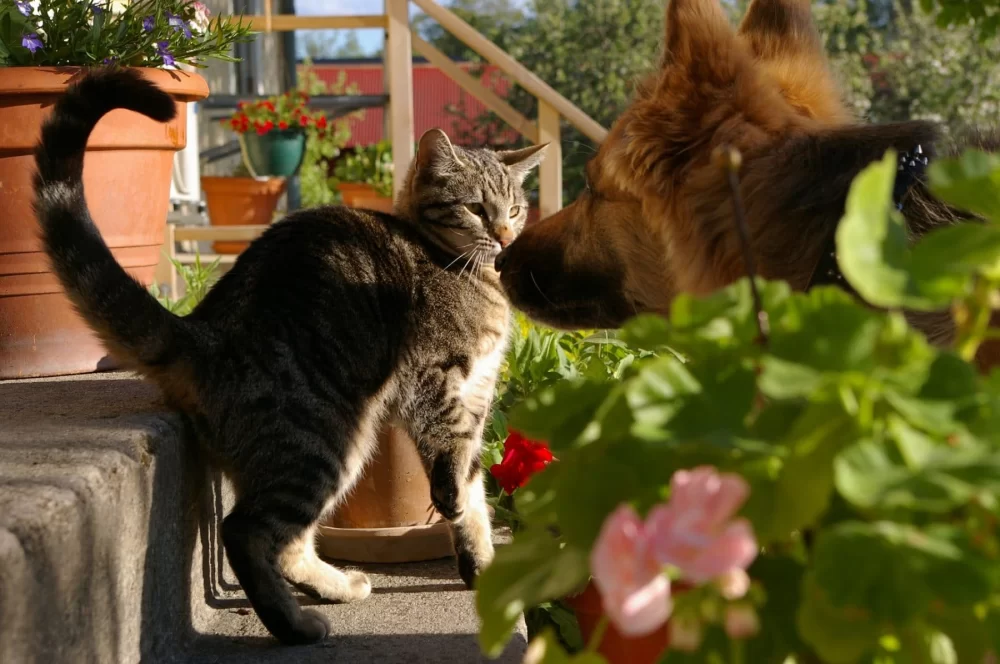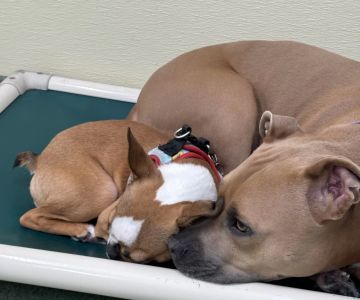Understanding Cat Anxiety When Introducing a New Pet
As a cat owner, I know how much our feline friends can get attached to their routines. When I first introduced a new pet to my cat, Whiskers, I had no idea how much anxiety it would cause her. Cats are creatures of habit, and any change in their environment, especially the addition of another pet, can trigger stress and anxiety. If your cat is struggling with the idea of a new furry companion, don’t worry—you’re not alone, and there are steps you can take to ease their anxiety.
Why Cats Get Anxious Around New Pets
In the wild, cats are territorial animals. They establish their own space and defend it from intruders, including other animals. This instinct doesn’t disappear when they become domestic pets. Introducing a new pet, whether it's another cat, a dog, or a smaller animal like a rabbit, can be seen as a threat to their territory. The unfamiliar scents, sounds, and sights of a new pet can overwhelm your cat, causing anxiety, stress, and even behavioral changes like hiding, hissing, or aggression.
Signs of Anxiety in Cats
Before you can calm your anxious cat, it’s important to recognize the signs of stress. Cats are experts at hiding their discomfort, but there are a few telltale signs you can watch out for:
- Increased vocalization, such as excessive meowing or growling
- Hiding in secluded spots or under furniture
- Loss of appetite or eating less than usual
- Changes in litter box habits (e.g., not using it or going outside the box)
- Over-grooming or scratching excessively
- Increased aggression or hissing at the new pet
If your cat is showing these signs, it’s essential to take steps to reduce their anxiety. Thankfully, there are plenty of strategies you can try to help ease the transition for both your cat and the new pet.
1. Create a Safe Space for Your Cat
When I introduced Whiskers to our new dog, I quickly realized how important it was to provide a safe space for her. Cats need a designated area where they feel secure. This can be a separate room or a quiet corner with familiar items like their bed, favorite toys, and litter box. By creating a “safe zone” for your cat, you give them a retreat where they can go to escape the new pet when they feel overwhelmed. Make sure this space is off-limits to the new pet, especially during the initial introduction phase.
Why a Safe Space Works
Having their own area helps your cat feel less threatened by the new pet and reduces the pressure of having to interact. Cats are more likely to approach new situations on their own terms when they know they have a safe place to retreat to. This also helps them associate the new pet with positive experiences rather than stress.
2. Gradual Introductions: Take It Slow
One of the biggest mistakes I made when introducing a new pet to Whiskers was rushing the process. I was excited for them to meet, but cats need time to adjust to new animals in their territory. It’s crucial to take things slowly. Start by allowing your cat and the new pet to sniff each other’s scent without direct contact. You can swap their bedding or toys so they can get used to each other’s smell before the big introduction. This gradual exposure helps reduce the fear of the unknown.
How to Implement Gradual Introductions
Start by keeping the new pet in a separate room with a closed door. Allow your cat to explore the door and sniff around, hearing the sounds of the new pet, but don’t allow direct contact at first. After a few days of this, you can begin to allow short, supervised meetings where they can see each other from a distance. Gradually increase the duration of these interactions, making sure both pets are calm and comfortable. Always reward your cat with treats or praise for calm behavior during these introductions.
3. Keep Calm and Be Patient
It’s natural for both pets to be nervous during their first interactions, but I found that Whiskers picked up on my energy. If I was anxious or overly excited about the situation, she became more agitated. Cats are sensitive to our emotions, so it’s important to remain calm and patient throughout the process. If you show your cat that everything is okay, they are more likely to feel secure and confident.
Managing Your Own Anxiety
It’s easy to become anxious when your cat is upset, but staying calm will help both pets adjust. Take breaks if you feel stressed, and remember that it can take days or even weeks for pets to get comfortable with each other. Patience is key, and forcing the interaction too soon can set back the process.
4. Positive Reinforcement for Good Behavior
Whenever your cat behaves calmly during the introduction process, reward them with positive reinforcement. This could be in the form of treats, extra playtime, or a gentle petting session. I found that using treats was particularly effective in encouraging Whiskers to stay calm around our new dog. Positive reinforcement helps your cat associate the new pet with good things, which can make them more willing to accept the change.
What to Do If Your Cat Becomes Aggressive
Occasionally, your cat may react aggressively, either by hissing, swatting, or growling. This is completely normal, especially during the early stages of the introduction. If aggression occurs, separate the pets immediately and give both of them time to calm down. Never punish your cat for their behavior, as this will only increase their anxiety. Instead, focus on rewarding positive, calm behavior and give your cat space when they need it.
5. Consult a Veterinarian or Animal Behaviorist
If your cat continues to struggle with anxiety despite your best efforts, it may be time to seek professional help. A veterinarian can rule out any underlying health issues that may be contributing to the anxiety, and an animal behaviorist can provide personalized strategies for managing your cat’s stress. I consulted with an animal behaviorist after several unsuccessful attempts to introduce Whiskers to our new dog, and the advice I received helped us make real progress in a short amount of time.
When to Seek Help
If your cat’s anxiety seems extreme or if they begin displaying severe behavioral issues like excessive aggression or self-harm, it’s important to consult a professional. A behaviorist can help tailor a plan specific to your cat’s needs, and a veterinarian may recommend anxiety-reducing medications to help with the adjustment period.
My Experience: Whiskers and the New Dog
When we brought our dog, Max, into the home, Whiskers was far from pleased. At first, she would growl and hide whenever Max got too close. It took about two weeks of gradual introductions, creating a safe space for her, and lots of patience before Whiskers and Max started to tolerate each other. Now, they’re best buddies, and Whiskers even lets Max sit on the couch beside her. The process wasn’t easy, but it was worth the effort, and I learned so much about managing cat anxiety during pet introductions.
Introducing a new pet to your cat can be a stressful experience for both you and your feline friend, but with patience, gradual introductions, and a calm environment, you can help ease their anxiety and create a harmonious household. Just remember to take things one step at a time and trust the process!










